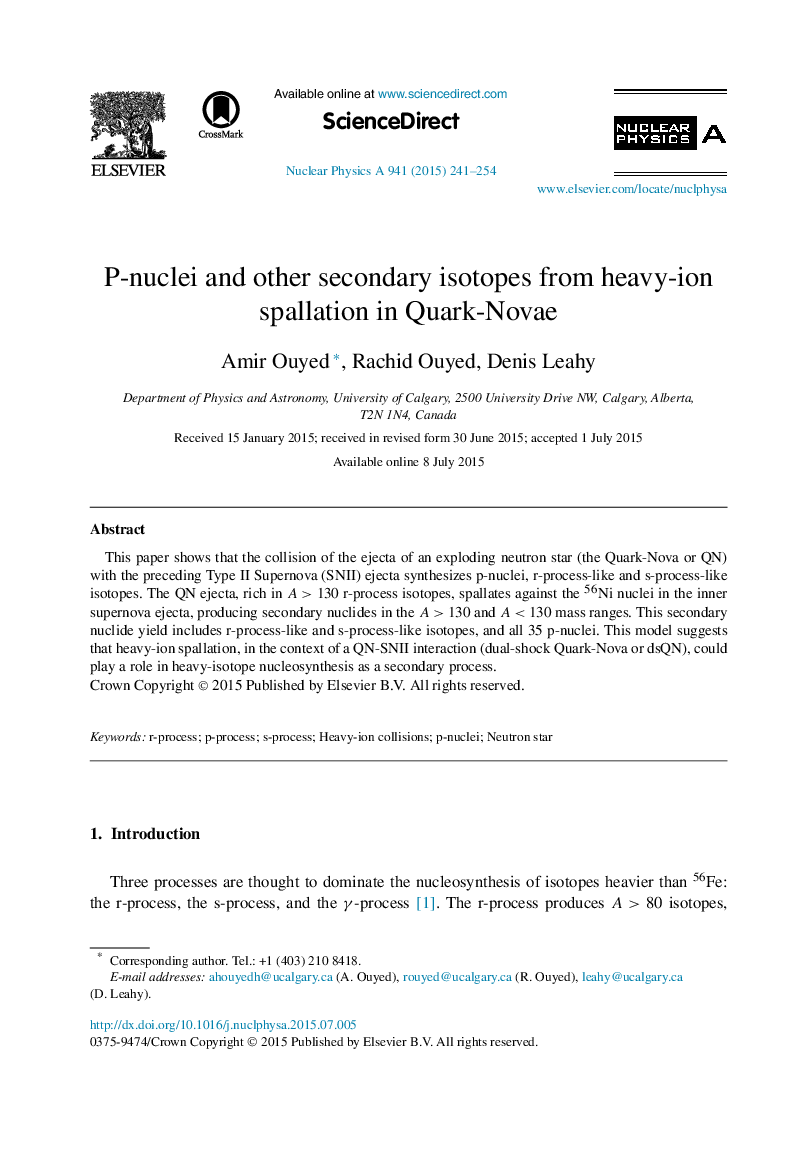| Article ID | Journal | Published Year | Pages | File Type |
|---|---|---|---|---|
| 1836864 | Nuclear Physics A | 2015 | 14 Pages |
Abstract
This paper shows that the collision of the ejecta of an exploding neutron star (the Quark-Nova or QN) with the preceding Type II Supernova (SNII) ejecta synthesizes p-nuclei, r-process-like and s-process-like isotopes. The QN ejecta, rich in A>130A>130 r-process isotopes, spallates against the 56Ni nuclei in the inner supernova ejecta, producing secondary nuclides in the A>130A>130 and A<130A<130 mass ranges. This secondary nuclide yield includes r-process-like and s-process-like isotopes, and all 35 p-nuclei. This model suggests that heavy-ion spallation, in the context of a QN-SNII interaction (dual-shock Quark-Nova or dsQN), could play a role in heavy-isotope nucleosynthesis as a secondary process.
Related Topics
Physical Sciences and Engineering
Physics and Astronomy
Nuclear and High Energy Physics
Authors
Amir Ouyed, Rachid Ouyed, Denis Leahy,
